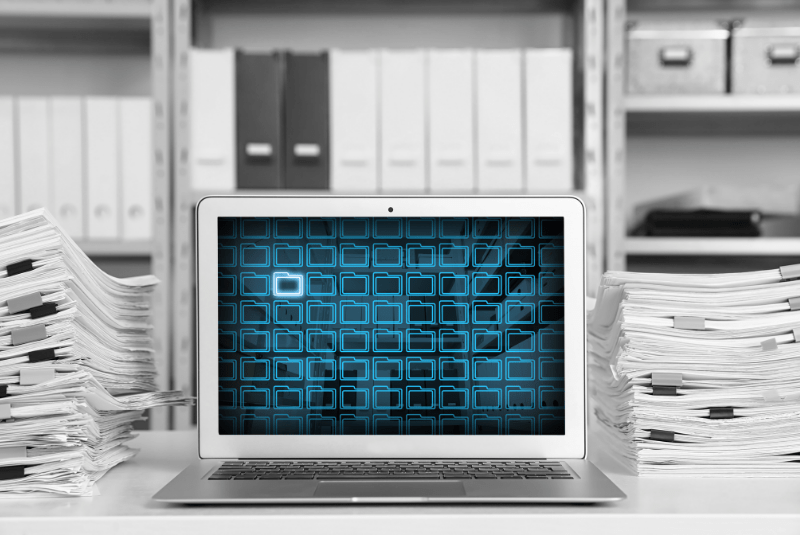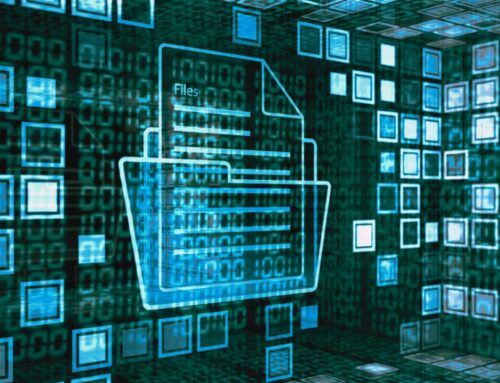The paperless office is becoming more popular as companies reduce costs and dependence on physical documents. Paper-based procedures still exist for better work efficiency, but they are often streamlined via electronic records-keeping systems that can be accessed easily with any device or network connection available in the modern workplace – even if you’re offsite. Paper-based light aids in the digital transition of a company. It usually includes switching to an electronic document management system that helps you keep your important files safe and accessible at all times, no matter where or when they are needed.
The paperless workplace is a popular trend in today’s corporate world. Proponents of this idea say that it helps improve office productivity and efficiency, saves money for businesses by eliminating printing costs from work procedures and provides convenience to employees who can transfer digital documents between themselves without having any physical copies present.
5 Steps To A Paperless Office
The five steps to making your office paperless are as follows:
Discussing the Procedure
The first step in performing a successful digital transformation is gathering all stakeholders and talking about the process. Next, it’s essential to know how things are done with C-level executives and management staff members. Hence, everyone knows what their roles entail in the future- whether they’re updating old processes or starting new ones! It ensures there won’t be any surprises when you start implementing changes at work. Someone already has experience doing something differently than before, saving time by preventing miscommunication between involved parties. The process of digitizing an organization must be collaborative, with everyone involved in decision-making. This way, mapping out exactly how it operates so that procedures can accurately and successfully carry over into our new system; if not, there could potentially still exist some flaws that would need fixing after all this work has been done.
Slow Changes
The temptation will be vital to overhaul your procedures and change everything efficiently. However, this could leave employees who are used daily to the old ways of doing things. The goal should always stay on track by avoiding being too revolutionary or reinventing wheels when implementing new technology into work processes and remembering that people make mistakes too, so they need some room to avoid getting lost among those perfectionists. When converting paper-based procedures to digital workflows, it is crucial for managers and employees alike to understand the changes made. These minor tweaks should happen over time instead of one significant change so success can continue being achieved by making improvements in smaller steps rather than having everyone switch all at once, which could confuse those unfamiliar with how things are done beforehand.
Collecting All Data
Once the location and security of your data have been confirmed, you should map out where it is now stored. Is everything in one place? Or were they scattered across several offices with some people going electronic by keeping critical information locally on their work computers? To ensure a successful transition, all of this information needs to be mapped out and established in an easy-to-use system that everyone can access.
Digitalization
Now that all the files are digitized, employees need to scan in papers or outsource this task. Both options come with some pros and cons, but overall it’s good news because we’ll be able to keep up with the workload to avoid any problems.
The internal approach may be cheaper, but it will cause significant disruption to your work schedule. Outsourcing might require more time for this decision; however, there’s no way of knowing what kind or level solution would best suit each office until they try them all.
Data Access
The digitization process should be easy. Once you’ve determined who will have access, it’s just a matter of getting those set up with some personalized dashboard to see all the workflows required to run an effective business in this new world.
Advantages of Having a Paperless Office
The Paperless Project states that corporations in America spend over $120 billion per year on printed forms, with most of them being obsolete after only three months and thrown away. Office workers waste around 30-40% of their time searching through existing file cabinets for paperwork.
Paperless environments are better for the environment and provide more efficient resources. To learn about how they work, continue reading.
Convenient working
A paperless office is a fantastic way to save time during the workday. You can access and retrieve documents easily this way, which saves you valuable minutes every day.
Constant access to data
Digitizing paper-based operations is a great way to ensure that your team has instant access and information at their fingertips. A file on someone’s desk or notes with crucial details can be a disaster for companies because there isn’t any centralized system which means everything falls apart when you lose it.
Information and data are the lifelines of any business, and by becoming paperless for better work efficiency, you can avoid a breakdown in vital sharing. Now employees will have accessible access to their files from anywhere, giving them more peace when it comes time for work.
Efficient Work
Going paperless is one of the most efficient ways to boost your productivity and work efficiency. Reducing time spent on busy work allows team members more freedom. Instead of wasting precious minutes doing paperwork or chats with clients who could be elsewhere performing tasks, it focuses on their essential duties instead of wasting precious minutes. Going paperless is the key to more organized work life. By downloading all of your filings and keeping track of spreadsheets, you can spend less time per task while still getting everything done promptly!
Technological Advancement
The use of technology to fill out paperwork has made it easier than ever before. With digitally acquired data, rules can be created that generate applications automatically- saving time and increasing accuracy for everyone involved in the process.
These validation methods help you fill out the information accurately and quickly so that the same document can be reproduced with no errors. At the same time, it also ensures complete data in automated systems allowing for more reliable processing of requests or transactions alike.
Less Expensive
Paperless offices are an eco-friendly, cost-effective way to keep your organization running smoothly. Not only does it saves money on paper, but it also cuts printer maintenance and ink/toner costs with the reduced use of physical storage. The switch to a paperless system saves businesses an average of $80 per employee. More than just printing and paper expenditures will be kept for your firm, as offices becoming more efficient repurpose money into other resources. Investing in your employees is one way to ensure that you’re getting the most out of them. For instance, when an employee spends their time doing high-quality work rather than mundane paperwork, this should deliver a Higher Return on Investment.
Easy To Manage
Personalized emails are more engaging and successful than broad promos. They provide valuable information about your company in an easy-to-read format, which helps you build relationships with customers. At the same time, also upselling products they may not have known existed or increasing retention rates.
Challenges Of Digitalization
- Going paperless can be challenging to read lengthy documents on a computer screen. Reading from paper feels more natural, and giving people the option might encourage them to write and speak up while they’re working.
- The paperless office is not only efficient but also allows for greater security. With access to information becoming increasingly important, we must keep track of who has what they should not have to avoid any negative legal ramifications from computerized work processing.
- The documents you have been converting to digital format for years now need to be upgraded with new software, which will take time and cost quite a bit. Regular hardware upgrades are also required to keep up-to-date on the latest technologies.
- The modern corporation is highly susceptible to various events that can essentially shut it down. Computer viruses, power outages and network malfunctions are just examples in this age where digital data reigns supreme over physical assets.
Conclusion
The world’s paper consumption has reached unsustainable levels. To reduce the ecological footprint, cut costs and improve productivity, companies need to keep up with initiatives such as going paperless. The digitization of data and the transition to a paperless environment are not simple tasks. It requires an immense amount of effort but once completed. These changes will provide better ROIs for companies across all industries because they can scale quickly with agile solutions.
The paperless workplace is now more accessible than ever with proven cloud-based technology. These workflow automation systems will help companies save time money and avoid the risk of human error in an increasingly hectic workday schedule.




